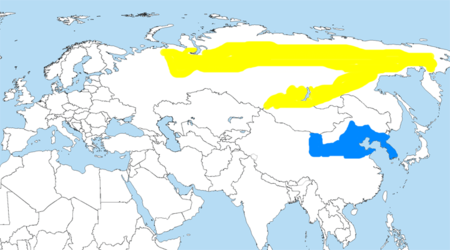Sothic cycle
|
Read other articles:

Voce principale: Supercoppa Sammarinese. Supercoppa Sammarinese 2019 Competizione Supercoppa Sammarinese Sport Calcio Edizione 34ª Organizzatore FSGC Date 14 settembre 2019 Partecipanti 2 Formula Gara unica Risultati Vincitore Tre Fiori(5º titolo) Secondo Tre Penne Statistiche Incontri disputati 1 Gol segnati 3 (3 per incontro) Cronologia della competizione 2018 2021 Manuale La Supercoppa Sammarinese 2019 è stata la 34ª edizione di tale competizione. Vi hanno preso parte la vincitrice d…

此條目需要补充更多来源。 (2021年7月4日)请协助補充多方面可靠来源以改善这篇条目,无法查证的内容可能會因為异议提出而被移除。致使用者:请搜索一下条目的标题(来源搜索:美国众议院 — 网页、新闻、书籍、学术、图像),以检查网络上是否存在该主题的更多可靠来源(判定指引)。 美國眾議院 United States House of Representatives第118届美国国会众议院徽章 众议院旗帜…

For other uses, see Mass in F Minor (disambiguation). Kyrie Eleison (song) redirects here. For other uses, see Kyrie (song) and Kyrie (disambiguation). 1968 studio album by The Electric PrunesMass in F MinorStudio album by The Electric PrunesReleasedJanuary 1968 (1968-01)RecordedDecember 1967GenrePsychedelic rockLength26:26LabelRepriseProducerDavid HassingerThe Electric Prunes chronology Underground(1967) Mass in F Minor(1968) Release of an Oath(1968) Singles from Mass in F Min…

جزء من سلسلة مقالات حولتاريخ الكرد وثقافتهم التاريخ القديم السلالات الكردية باقردا زابديسين موكسوين دار كايس جوتيون العصور الوسطى شهرزور صديقيون الأمير جعفر الداسني عيشانيون ديسم شداديون راوندية حسنويون عنازيون مروانيون هذبانيون هزاراسبيون أيوبيون بدليسيون أردلانيون ب…

This article needs additional citations for verification. Please help improve this article by adding citations to reliable sources. Unsourced material may be challenged and removed.Find sources: New In Chess – news · newspapers · books · scholar · JSTOR (December 2022) (Learn how and when to remove this message) New In ChessCover of 25th anniversary issue (2009, issue 7) depicting Magnus Carlsen on the coverEditorJan Timman and Dirk Jan ten GeuzendamCateg…

Music & MediaKategoriIndustri hiburanFrekuensiWeeklyTerbitan pertama19 Maret 1984; 40 tahun lalu (1984-03-19)Terbitan terakhir09 Agustus 2003 (2003-08-09)Berpusat diLondon, InggrisOCLC number29800226 Music & Media adalah majalah pan-Eropa untuk radio, musik dan hiburan. Majalah ini diterbitkan pertama kali pada tahun 1984 sebagai Eurotipsheet, tetapi pada tahun 1986 berubah nama menjadi Music & Media.[1] Awalnya berbasis di Amsterdam, tetapi kemudian dipindahkan ke …

Cuisine of the Acehnese people Mi aceh, common Acehnese fried noodles in Indonesia. This article is part of the series onIndonesian cuisineMasakan Indonesia National dishes Gado-gado Nasi goreng Rendang Satay Soto Tumpeng Regional and cultural cuisines Acehnese Arab Balinese Banjarese Batak Betawi Chinese Gorontalese Indian Indo Javanese Madurese Makassarese Malay Minahasan Minangkabau Palembangese Peranakan Sundanese Ingredients Bumbu Condiments Peanut sauce Sambal Santan Types of food Foods Di…

Palestinian militant and political organization PLO redirects here. For other uses, see PLO (disambiguation). You can help expand this article with text translated from the corresponding article in Arabic. (June 2019) Click [show] for important translation instructions. Machine translation, like DeepL or Google Translate, is a useful starting point for translations, but translators must revise errors as necessary and confirm that the translation is accurate, rather than simply copy-pasting …

اضغط هنا للاطلاع على كيفية قراءة التصنيف عصفور الشوك السيبيري حالة الحفظ أنواع غير مهددة أو خطر انقراض ضعيف جدا (IUCN 3.1)[1] المرتبة التصنيفية نوع[2][3] التصنيف العلمي المملكة: حيوانات الشعبة: حبليات الطائفة: طيور الرتبة: عصفوريات الفصيلة: عصافير الشوك الجنس: عص�…

Traditional Welsh festival This article includes a list of references, related reading, or external links, but its sources remain unclear because it lacks inline citations. Please help improve this article by introducing more precise citations. (June 2018) (Learn how and when to remove this message) A maypole at Llanfyllin, Wales on 1 May 1941 Calan Mai ([ˈkalan ˈmai̯] first day of May) or Calan Haf ([ˈkalan ˈhaːv] first day of Summer), also historically called Cyntefin, …

Former oilfield in Pennsylvania Oil Creek State ParkIUCN category III (natural monument or feature)A historic recreation of a wooden oil derrick at Oil Creek State ParkLocation of Oil Creek State Park in PennsylvaniaShow map of PennsylvaniaOil Creek State Park (the United States)Show map of the United StatesLocationVenango County, Pennsylvania, U.S.Coordinates41°32′30″N 79°38′59″W / 41.54167°N 79.64972°W / 41.54167; -79.64972Area6,250 acres (25.3 km2)Elev…

Fever Live In Hall IIAlbum mini karya Koda KumiDirilisJuli 2009 (JP)CD+DVD (RZCS-20866-B)Direkam2006-2009Genrepop Jepang/R&BLabelRhythm ZoneProduserSANKYOKronologi Koda Kumi 3 Splash(2009)String Module Error: Match not found2009 Fever Live In Hall II (2009) Alive/Physical Thing(2009)String Module Error: Match not found2009 Fever Live In Hall II (ditulis sebagai KODA KUMI FEVER LIVE IN HALL II) adalah sebuah album mini khusus yang dirilis oleh penyanyi-penulis lagu Jepang Koda Kumi. Album…

City in Missouri, United StatesShrewsbury, MissouriCityLocation of Shrewsbury, MissouriCoordinates: 38°35′12″N 90°19′41″W / 38.58667°N 90.32806°W / 38.58667; -90.32806CountryUnited StatesStateMissouriCountySt. LouisArea[1] • Total1.44 sq mi (3.73 km2) • Land1.44 sq mi (3.73 km2) • Water0.00 sq mi (0.00 km2)Elevation[2]522 ft (159 m)Population (2020)&…

2008 United States House of Representatives elections in Texas ← 2006 November 4, 2008 2010 → All 32 Texas seats to the United States House of RepresentativesTurnout7,528,622 - 40% Majority party Minority party Party Republican Democratic Seats before 19 13 Seats won 20 12 Seat change 1 1 Popular vote 4,203,917 2,979,398 Percentage 55.8% 39.6% Swing 3.5% 4.7% Election results by district Election results by county Republican 40�…

Badai SandyHurikan mayor 3 (SSHWS/NWS)Badai Sandy pada puncaknya tanggal 25 OktoberTerbentuk pada22 Oktober 2012Mereda pada31 Oktober 2012(ekstratropis setelah 29 Oktober) Kecepatan anginmaksimal1 menit: 115 mil/jam (185 km/jam) Tekanan minimal940 mbar (hPa) Korban jiwa132Kerusakan20.4 miliar (USD 2012)Area terdampakAntillen Besar, Kepulauan Bahama, sebagian besar Amerika Serikat timur (khususnya pesisir Amerika Serikat Mid-Atlantik dan New England), Bermuda, Kanada timurBagian dari Musim badai …

Il progettista generale della ANTK Antonov P.V. Balabuev alla vigilia del primo volo dell'An-140, con il pilota collaudatore Anatolij Kazimirovič Khrustitsky a destra Petro Vasyl'ovyč Balabujev (in ucraino Петро Васильович Балабуєв?, Petro Vasyl'ovyč Balabujev; fattoria Valujs'k, 23 maggio 1931 – Kiev, 17 maggio 2007) è stato un ingegnere sovietico e ucraino, che come progettista generale della (OKB) Antonov ha realizzato i velivoli Antonov An-22, Antonov An-72,…

Questa voce o sezione sull'argomento nobili tedeschi non cita le fonti necessarie o quelle presenti sono insufficienti. Puoi migliorare questa voce aggiungendo citazioni da fonti attendibili secondo le linee guida sull'uso delle fonti. Carlo di Hohenzollern-SigmaringenCarlo di Hohenzollern-Sigmaringen in un ritratto del XIX secoloPrincipe di Hohenzollern-SigmaringenStemma In carica17 ottobre 1831 –27 agosto 1848 PredecessoreAntonio Luigi SuccessoreCarlo Antonio Nome completoCar…

Resolusi 1239Dewan Keamanan PBBDistribusi bantuan di Kosovo (1999)Tanggal14 Mei 1999Sidang no.4.003KodeS/RES/1239 (Dokumen)TopikSituasi di KosovoRingkasan hasil13 mendukungTidak ada menentang2 abstainHasilDiadopsiKomposisi Dewan KeamananAnggota tetap Tiongkok Prancis Rusia Britania Raya Amerika SerikatAnggota tidak tetap Argentina Bahrain Brasil Kanada Gabon Gambia Malaysia Namibia Belanda Slovenia Resolusi 1239…

2009 American legal drama television series For other uses, see The Good Wife (disambiguation). The Good WifeGenre Legal drama Political drama Created by Robert King Michelle King Starring Julianna Margulies Matt Czuchry Archie Panjabi Graham Phillips Makenzie Vega Josh Charles Christine Baranski Alan Cumming Zach Grenier Matthew Goode Cush Jumbo Jeffrey Dean Morgan Composers Danny Lux (2009) David Buckley (2010–2015) Country of originUnited StatesOriginal languageEnglishNo. of seasons7No. of …

This article needs additional citations for verification. Please help improve this article by adding citations to reliable sources. Unsourced material may be challenged and removed.Find sources: Zollernalbkreis – news · newspapers · books · scholar · JSTOR (January 2013) (Learn how and when to remove this message) District in Baden-Württemberg, GermanyZollernalbkreisDistrict FlagCoat of armsCountryGermanyStateBaden-WürttembergAdm. regionTübingenCapital…


